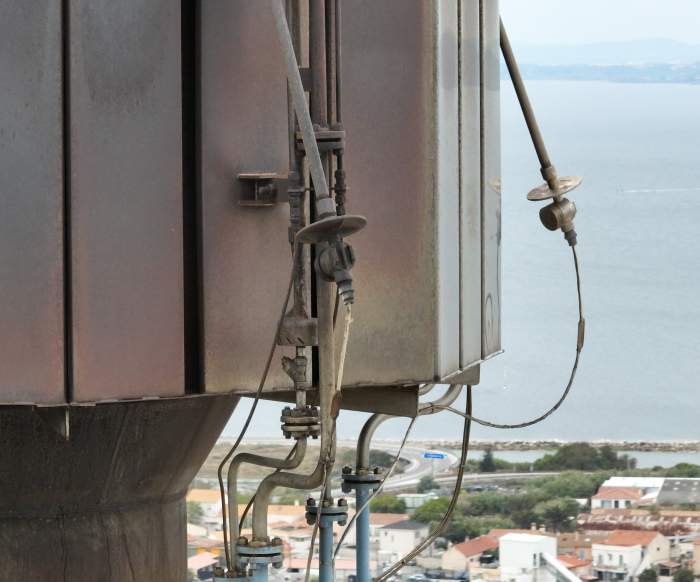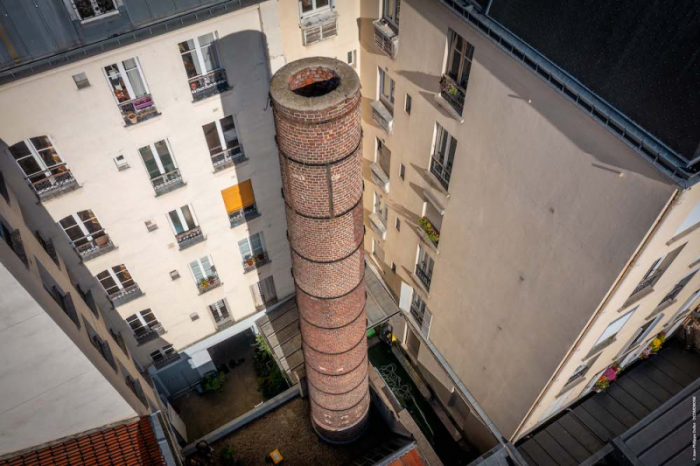
Benefits of drone inspections
Drone inspection is undeniably effective. His speed, in particular, is one of his major assets. A drone can cover a large area in a short time and provide precise data on the state of an infrastructure or a structure.
The drone's precision is unrivaled: equipped with specific sensors and high-resolution cameras, it can detect the smallest details - cracks, corrosion, structural defects - often invisible to the human eye. The captured images are then analyzed by experts to identify any early signs of deterioration.
In terms of security too, the drone has revolutionized the field of inspections. No more need for a human inspector to physically access potentially dangerous areas: the drone can access all corners without risk thanks to the dexterity of the remote pilot.
From an economic perspective also, the overall cost is reduced thanks to drones. Not only does their use reduce the costs associated with human interventions on site, but it also limits the costs incurred by corrective maintenance following an unanticipated failure.
As for their accessibility: with the increasing miniaturization of electronic equipment and the associated progressive drop in prices; we observe that even small structures and public institutions such as municipalities can now easily equip themselves with these efficient tools, provided they have a trained employee.
Examples of drones used as a technical solution through the HOSIHO Drone Network members.
Types of infrastructure inspected
The use of drones for infrastructure inspection covers a varied range of works. The bridge, for example, is a classic type of infrastructure that greatly benefits from this technology. Drones can effectively inspect hard-to-reach and potentially dangerous areas of bridges.
Likewise, the tunnel and the viaduct are two other types of infrastructure where the use of drones is advantageous, as are these few structures which often present inaccessible or risky areas for humans.
Dams and aqueducts are not left out in this non-exhaustive list. These large structures require special attention because
their condition can have a significant impact on public safety.
Pipes and the railway are also part of the infrastructure regularly inspected by drone. Pipelines can be examined from different angles to detect any damage or anomalies while railway tracks require constant monitoring to ensure they are functioning properly.
The electricity pylon and the industrial chimney represent two other areas where human intervention presents considerable risks while the use of drones makes these inspections safer and more efficient. For example, in the photo below, the inspection of the burners of one of the chimneys of a TotalEnergies refinery was carried out by our Marseille member, Drone-Pictures, at the request of the company Zeeco, responsible for their maintenance. Thanks to the powerful 28x zoom of the Mavic 3, the drone was able to photograph the details necessary for the expert, while remaining a good distance from the flames and therefore from the excessive heat which could have damaged the aircraft.

Drone technologies and equipment
The use of drones for the inspection of infrastructure and structures relies on sophisticated technologies, as highlighted by a study published in the Journal of Field Robotics in 2019. The drones used are generally equipped with cameras high resolution and zooms of 20 to 30 times the basic focal length, and sometimes thermal sensors, allowing precise and detailed analysis of the structures inspected. These cameras are distinguished by their ability to zoom in on specific areas while maintaining optimal image quality. In addition, they are sometimes coupled with specialized software which interprets the data collected to identify any anomalies or warning signs of structural degradation. Thermal sensors add another dimension to the assessment. They detect subtle variations in temperature that can indicate problems such as water infiltration or thermal loss. These drones generally have long-lasting batteries allowing them sufficient flight time to inspect even the largest structures without requiring multiple recharges. This technological level is illustrated by HOsiHO Drone Network, a professional network of qualified remote pilots equipped with the latest equipment to meet the specific needs of the sector. The combination of drone, high-resolution camera with powerful zoom, high-performance thermal sensor and highcapacity battery today constitutes an effective and even essential means for the careful inspection of complex infrastructures and structures.
French regulations on drones
The use of drones for the inspection of infrastructure and structures in France is subject to the same rigorous regulations as for any other drone. You should know that any operator wishing to use a drone in this context must be declared to the Directorate General of Civil Aviation (DGAC).
This procedure includes several steps, the main of which is registering the drone with the relevant authorities. Registration allows authorities to track drone activities and also ensures that drones comply with technical standards required.
The drone pilot must have certification proving that he has received the necessary training to operate the drone safely. This certification attests not only to its technical skills, but also to its in-depth knowledge of the rules and restrictions relating to the use of drones.
It is also necessary to respect certain geographical restrictions when using a drone to inspect infrastructure or structures. Certain areas are classified as exclusion zones where overflight by a drone is strictly prohibited without specific permission, as is the case with airports, prisons, or military bases. This measure mainly aims to preserve public security and protect certain sensitive sites.
Practical cases of drone inspection
The use of drones for the inspection of infrastructure and structures is an innovative practice which has proven to be precisely adapted to the needs of the sector. Several practical cases clearly illustrate the intelligence of this technological approach.
First, in the field of bridges and viaducts, drone inspections make it possible to quickly detect structural defects or corrosion without having to implement expensive and potentially dangerous equipment such as scaffolding or nacelles. Second, in the field of wind turbines, these intelligent flying devices offer an ideal solution to thoroughly inspect each blade without risking the lives of personnel. The captured high-resolution images can then be analyzed in detail by experts to identify any early signs of failure. When it comes to examining the general condition of inaccessible roofs or facades on historic or modern buildings, nothing beats a drone. This tool not only offers a unique point of view but also the possibility to precisely assess all relevant structural aspects.
Another example of inspection in a constrained and cramped environment is reported by our member Dcomdrone who carried out a visual inspection of a factory chimney in the heart of Paris, in the courtyard of a modern building. The old chimney had some defects which could easily and quickly be identified using the drone.
Inspecting the facade of a residential or office building is also common, particularly to detect improper installation of windows, or deterioration of the covering or other.
However, it should be noted that several factors influence the prices of drone services in France, such as the complexity of the project and the technological level required.

Future of drone inspections
The inspection of infrastructure and structures by drone is constantly evolving, benefiting from innovative research to improve efficiency and accuracy. The recent method presented by Science Robotics (2020) perfectly illustrates this trend: the use of drones equipped with laser sensors to detect defects in bridges. This innovative approach pushes the conventional boundaries of inspection, enabling more rigorous monitoring.
Regulations on the use of drones in Europe planned for 2024 could, however, play a role in the widespread implementation of these new inspection methods. Rapid technological development must be accompanied by adaptive regulations allowing their effective application while ensuring security and respect for individual freedoms. The future therefore looks promising but also full of challenges for the field.
In addition, to discover other technical services by drone in France and deepen your knowledge on this subject, you can consult this page: technical services by drone, in France.
